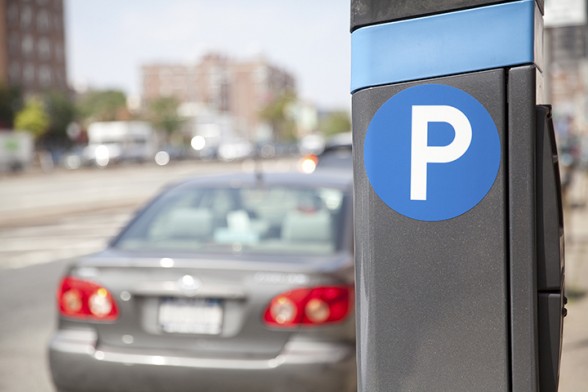Vancouver Plans To Be The Greenest City In 2020, And Here’s How They’ll Do It

Who will you meet?
Cities are innovating, companies are pivoting, and start-ups are growing. Like you, every urban practitioner has a remarkable story of insight and challenge from the past year.
Meet these peers and discuss the future of cities in the new Meeting of the Minds Executive Cohort Program. Replace boring virtual summits with facilitated, online, small-group discussions where you can make real connections with extraordinary, like-minded people.

The future of Vancouver’s urban landscape is green aplenty, with their plan to become the greenest city.
With millions of people moving from the suburbs into cities around the world, it’s hard to imagine not having a parking spot for your car. Years ago, residential and retail buildings were built with giant parking lots and garages that could accommodate everyone occupying the building. Today, with space at a premium, that landscape is changing significantly. Many of those lots are being demolished to make room for more offices, condos, and retail space. Cities have had to find ways to account for this growth and transformation, while still offering citizens the conveniences and amenities they’re accustomed to. It also means that cities have to find sustainable ways to provide these amenities. One such city accomplishing both goals is Vancouver.
Vancouver is experiencing tremendous growth in the downtown area, at a rate faster than anything they have seen in decades. They have also committed to a City Council–approved policy, “Greenest City 2020 Action Plan,” which delineates ten goal areas—in areas such as carbon emissions, waste, and the city’s ecosystem—with individual targets to obtain by 2020.
Zipcar has been serving the city of Vancouver since 2007, and with sustainability built into our business model, we’ve been working closely with residential partners to help achieve these 2020 goals. One example: Any new residential or mixed-use developments can take advantage of an incentive where five required parking spaces can be replaced with a single car share space.
It’s a plan that’s not only responsible, but also popular; adoption has already been significant. After all, parking spaces are expensive to build, and with car sharing models able to support the needs of many people, logic follows that the more car sharing members in a building, the fewer parking spots required, and, ultimately, the more money saved. Most importantly, it’s a win for resident urbanites, who quickly discover how easy it is to live car-free or car-light when convenient car sharing vehicles are literally just an elevator ride away.
The City of Vancouver has worked hard to execute this policy, and we’re excited to play a part. We believe it’s a smart and forward-thinking approach that other cities facing similar space and environmental concerns can learn from. We can’t wait to see what thoughtful and eco-friendly urban solutions emerge next.
This post originally appeared on Zipcar.com and is reprinted with permission.
Discussion
Leave your comment below, or reply to others.
Please note that this comment section is for thoughtful, on-topic discussions. Admin approval is required for all comments. Your comment may be edited if it contains grammatical errors. Low effort, self-promotional, or impolite comments will be deleted.
Read more from MeetingoftheMinds.org
Spotlighting innovations in urban sustainability and connected technology
Middle-Mile Networks: The Middleman of Internet Connectivity
The development of public, open-access middle mile infrastructure can expand internet networks closer to unserved and underserved communities while offering equal opportunity for ISPs to link cost effectively to last mile infrastructure. This strategy would connect more Americans to high-speed internet while also driving down prices by increasing competition among local ISPs.
In addition to potentially helping narrow the digital divide, middle mile infrastructure would also provide backup options for networks if one connection pathway fails, and it would help support regional economic development by connecting businesses.
Wildfire Risk Reduction: Connecting the Dots
One of the most visceral manifestations of the combined problems of urbanization and climate change are the enormous wildfires that engulf areas of the American West. Fire behavior itself is now changing. Over 120 years of well-intentioned fire suppression have created huge reserves of fuel which, when combined with warmer temperatures and drought-dried landscapes, create unstoppable fires that spread with extreme speed, jump fire-breaks, level entire towns, take lives and destroy hundreds of thousands of acres, even in landscapes that are conditioned to employ fire as part of their reproductive cycle.
ARISE-US recently held a very successful symposium, “Wildfire Risk Reduction – Connecting the Dots” for wildfire stakeholders – insurers, US Forest Service, engineers, fire awareness NGOs and others – to discuss the issues and their possible solutions. This article sets out some of the major points to emerge.
Innovating Our Way Out of Crisis
Whether deep freezes in Texas, wildfires in California, hurricanes along the Gulf Coast, or any other calamity, our innovations today will build the reliable, resilient, equitable, and prosperous grid tomorrow. Innovation, in short, combines the dream of what’s possible with the pragmatism of what’s practical. That’s the big-idea, hard-reality approach that helped transform Texas into the world’s energy powerhouse — from oil and gas to zero-emissions wind, sun, and, soon, geothermal.
It’s time to make the production and consumption of energy faster, smarter, cleaner, more resilient, and more efficient. Business leaders, political leaders, the energy sector, and savvy citizens have the power to put investment and practices in place that support a robust energy innovation ecosystem. So, saddle up.







0 Comments